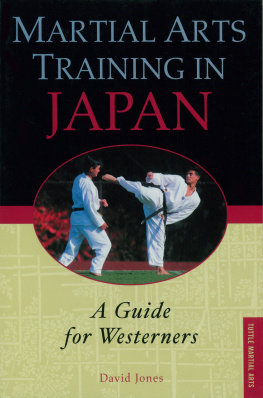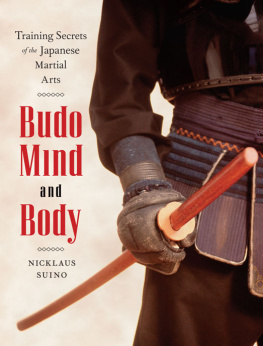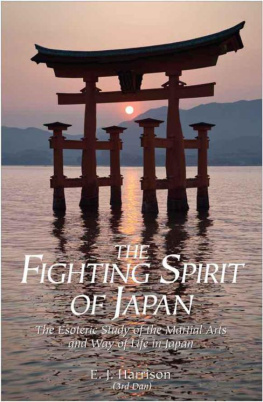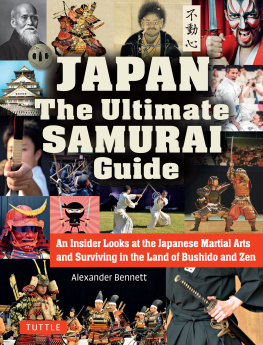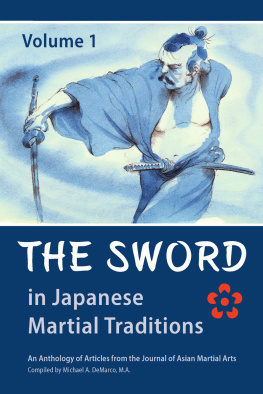Disclaimer
Please note that the authors and publisher of this book are not responsible in any manner whatsoever for any injury that may result from practicing the techniques and/or following the instructions given within. Since the physical activities described herein may be too strenuous in nature for some readers to engage in safely, it is essential that a physician be consulted prior to training.
All Rights Reserved
No part of this publication, including illustrations, may be reproduced or utilized in any form or by any means, electronic or mechanical, including photocopying, recording, or by any information storage and retrieval system (beyond that copying permitted by sections 107 and 108 of the US Copyright Law and except by reviewers for the public press), without written permission from Via Media Publishing Company.
Warning: Any unauthorized act in relation to a copyright work may result in both a civil claim for damages and criminal prosecution.
Copyright 2017
by Via Media Publishing Company
Articles in this anthology were originally published in the Journal of Asian Martial Arts , and from Asian Marital Arts: Constructive Thoughts & Practical Applications (2013) Listed according to the table of contents for this anthology:
Seckler, J. (1992), Vol. 1 No. 2, pp. 70-83
Taylor, K. (1993), Vol. 2 No. 3, pp. 36-63
Suino, N. (1994), Vol. 3 No. 3, pp. 84-91
Taylor, K. (1996), Vol. 5 No. 2, pp. 80-89
Taylor, K. (1997), Vol. 6 No. 1, pp. 80-103
Galas, M. (1997), Vol. 6 No. 3, pp. 20-47
Babin, M. (2000), Vol. 9 No. 4, pp. 36-51
Svinth, J. (2002), Vol. 11 No. 3, pp. 30-39
Suino, N. (2006), Vol. 15 No. 2, pp. 22-29
Bryant, A. (2009), Vol. 18 No. 4, pp. 64-71
Klens-Bigman, D. (2013), Asian Marital Arts , pp. 91-94
Taylor, K. (2013), Asian Marital Arts , pp. 133-136
Cover illustration
Magical artwork by Oscar Ratti, created directly from his feel for the Japanese fighting arts and a lifetime of academic research and budo practice.
Futuro Designs and Publications
ISBN-13: 978-1893765481
ISBN-10: 1893765482
www.viamediapublishing.com
contents
by Michael DeMarco, M.A.
CHAPTERS
by S. Matthew Galas, Esq.
by Richard W. Babin, Ed.D.
by Joseph R. Svinth, M.A.
by Nicklaus Suino, M.A.
by Andrew J. Bryant, B.A.
by Deborah Klens-Bigman, Ph.D.
by Kimberley Taylor, M.Sc.
preface
If the Way of the warrior is the soul of Japan, their magnificent swords were the tools utilized to form the nation and forge their spirit. Youll find an abundance of information in this special two-part digital anthology in support of this thesis.
Kimberley Taylor wrote four chapters, the first being an interview with 7thdan Matsuo Haruna. Haruna offers great advice for practitioners based on his firsthand experience. Taylors two highly researched chapters give overviews of two major iaido schools. Excellent photos and descriptions of katas accompany the text. Taylors finale is a short piece describing two of his favorite techniques, while Deborah Klens-Bigmans chapter deals with two of her favorite techniques.
Another top ranking swordsman, Nicklaus Suino, gets to the finicky details of sword-drawing techniques as performed by masters. From his two chapters, we learn how to watch for telltale signs of expertise and come to a greater appreciation of the art of drawing the sword.
Jonathan Secklers chapter translates and comments on an essay written by Chozanshi Shissai in 1729. He argues that Neo-Confucianism rather than Zen became the foundation of swordsmanship, and illustrates how the sword arts began to be appreciated for their use for self-development.
Andrew Bryants chapter focuses on poems passed down within the Muso Jikiden Eishin-ryu School of Iaido. These poems correspond to techniques contained within the system created in the 17th century. The author presents each poem and offers provides textual descriptions of their corresponding applications with each sword technique illustrated.
Joseph Svinths research presents the earliest kendo clubs to form in Canada. The socio-cultural settings add much flavor to this chapter. Information is provided regarding notable instructors, training, and competitions. Another way to better understand a martial tradition of one country is to compare it with another. Matthew Galas compares and contrasts sword arts in Germany with the Japanese traditions. The focus is on general principles and combat philosophy.
Devotees to sword practice are well award that scabbards get damaged. Michael Babins chapter shows how to build a serviceable scabbard according talents of anyone moderately handy with tools.
The twelve chapters described above should inspire further research and practice in the Japanese sword arts, plus bring a greater appreciation for their unique place in world history and culture.
Michael A. DeMarco, Publisher
Santa Fe, New Mexico, December 2017
Kindred Spirits The Art of the Sword in Germany and Japan
by S. Matthew Galas, Esq.
In the foreground, a swordsman defends against his opponents Oberhau (downwards cut) by striking his arm. To the left, another swordsman parries a similar attack with a Zwerchhau (horizontal cut). This cut simultaneously deflects the incoming blade and strikes the opponents head. All illustrations courtesy of S. M. Galas .
Background
Historians and anthropologists have long recognized the many similarities between the cultures of feudal Japan and medieval Europe. The government by a feudal hierarchy based on military service, the domination of the battlefield by an elite warrior class with a strict code of conduct, the cultivation of arts and letters alongside the use of weaponsall of these subjects have been noted and discussed at length. Less attention, however, has been paid to the close parallels between the fighting arts of the European knight and the samurai of feudal Japan. This chapter will examine the art of the sword in medieval Germany, comparing and contrasting it with the classical Japanese martial traditions ( ryuha ). The period covered by this inquiry will reach from approximately 1350 until 1600. For the sake of brevity, the focus will be on general principles and combat philosophy rather than on specific techniques.
The student of the Japanese tradition is fortunate, since the martial arts of the classical warrior ( bushi ) have been handed down to the present as a living art. As a result, he need only look to surviving sword fighting schools ( kenjutsu ) for illumination. Despite this advantage, changes in the form of the Japanese sword, as well as the incremental modification of techniques by successive headmasters, make it difficult to determine whether the kenjutsu of today is truly the same as that practiced by the warriors of medieval Japan.
The European tradition presents even greater difficulty. The martial systems of medieval Europe are long dead, victims of the invention of gunpowder and firearms. Modern fencing offers no clues, derived as it is from the featherweight gentlemans sword of the 18th century. Further hindering this study is a host of stereotypes and misconceptions concerning the knights armor and weapons.








